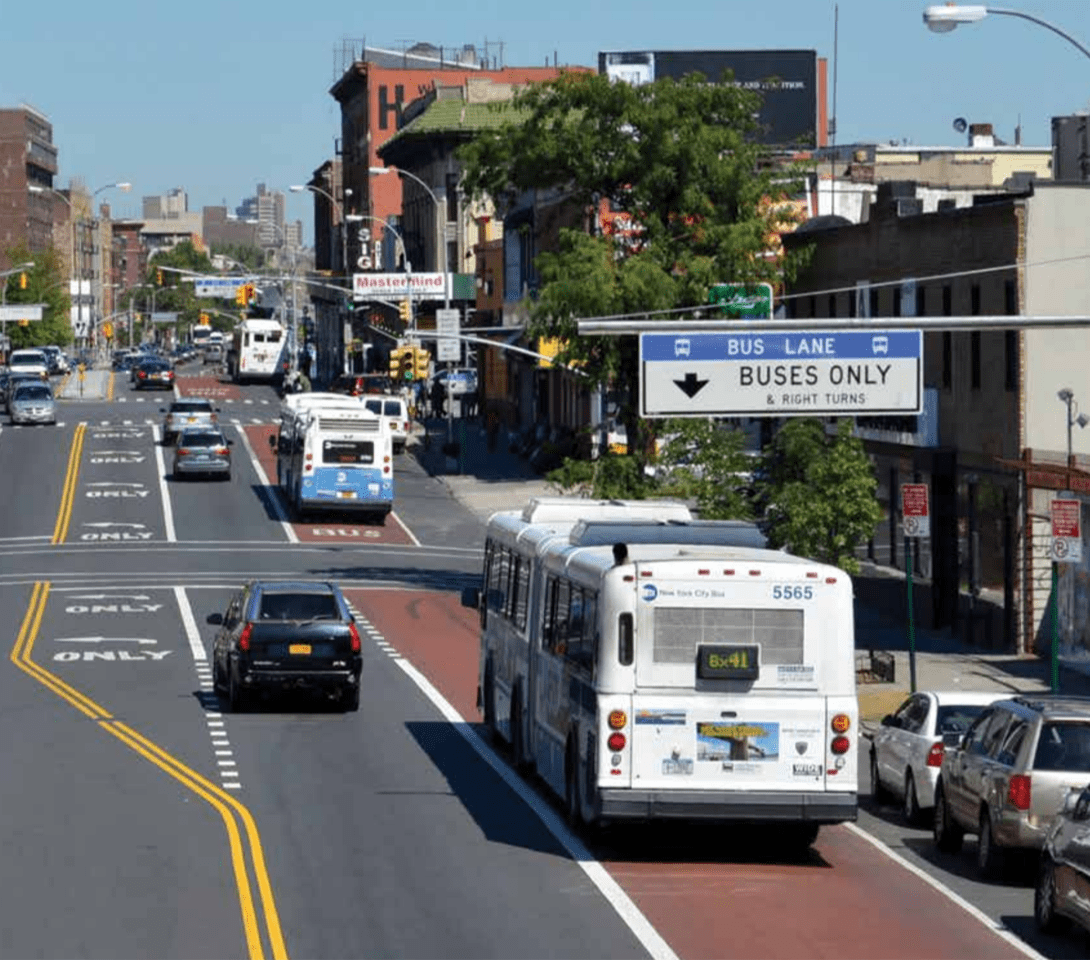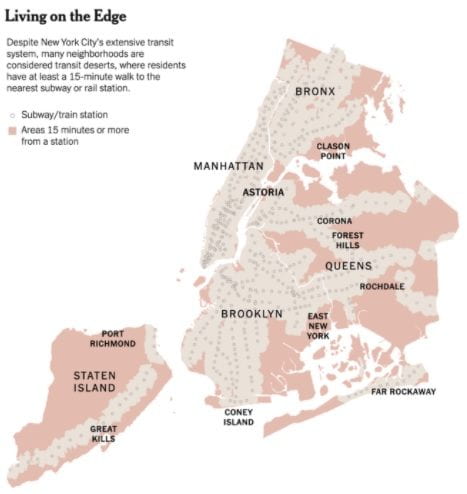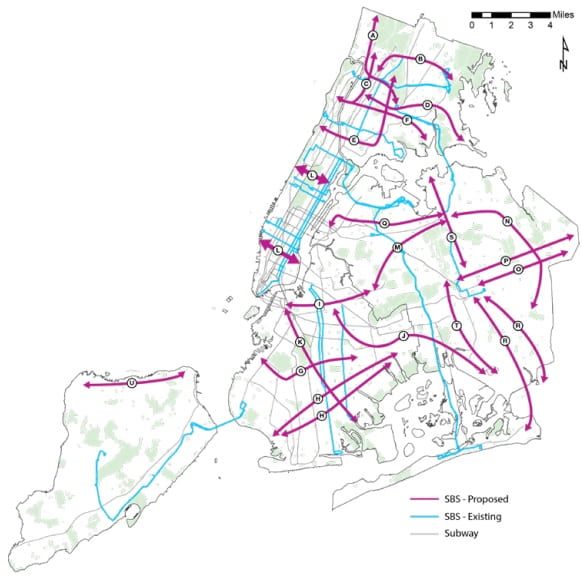
Improving bus service could help New York revive its economy and its slumber in a post-COVID world. One solution would be to think big, and change Select Bus Service (SBS) into full-fledged Bus Rapid Transit (BRT).
Right now, the most important concern for bus transit is keeping passengers healthy and safe from COVID-19. Even during a pandemic, New Yorkers still have to travel and commute and now we’ve seen bus ridership rise quicker than subway ridership during the summer. Bus operators can control how many riders are on a bus at a time as well as move fewer people than the subways. And because buses are on the roads, they can open their windows for air circulation, a key in fighting COVID-19. It may take years for people to feel comfortable using subways, but buses would give riders a viable option as the city recovers. We could have bus service that allows riders to stay safe and continue to use public transit.
Expanding and revamping our bus network is a cost-effective way for New York to propel its transit forward. With an approximately 8,000 miles of streets across the five boroughs and over 5,700 buses in the fleet, New York wouldn’t have to restart bussing, but it could rethink its bus network to expand access to essential workers living in transit deserts, and in a post-COVID world, redraw existing lines to connect more riders to the subway system.

Image: Map of transit deserts in NYC, 2019 (Source: New York Times)
And because bus systems run on roads, bus lines can be changed as neighborhoods and movement patterns change. As discussed in Steven Higashide’s Better Buses, Better Cities, the city of Houston was able to redraw its entire network in 18 months to help connect outer-suburban riders with more frequent service. With the help of city officials, local advocates, and urban planners, American cities can revamp their bus networks in a cost-effective manner.
The city has the foundation to better bus service with SBS but making a system with full BRT lines would propel New York’s transportation network into the modern era, allowing more passengers along the bus network and would provide a cheaper alternative to building more subway lines. SBS is New York’s version of BRT, designed to both expand express bus service and passengers could pay for their ride before they board. The city released its Better Buses Action Plan in 2019, calling for more bus lanes, add hundreds of miles of Transit Signal Priority intersections, and asked the public to where new SBS service could be added, as seen in the map below:
 Image: Map of NYC with existing SBS and proposed areas where SBS could be added (Source: Better Buses Action Plan, April 2019)
Image: Map of NYC with existing SBS and proposed areas where SBS could be added (Source: Better Buses Action Plan, April 2019)
Looking at both maps the need for express bus service in the outer boroughs becomes clear. But SBS doesn’t have some of the key functions of a BRT system. Having raised platforms for passengers to board buses quicker, GPS technology for riders to better track buses is getting better, but still needs more improvements, as some SBS lines don’t have true dedicated bus-only lanes. New Yorkers deserve and need a BRT system to travel safely, quickly, and efficiently.
The MTA, even with the financial setbacks of COVID, has the chance to rethink its bus network and express bus service. For the city to thrive, it is time to rethink our buses so that when commuters come back to the system in full force, the city may recover quicker and grow in a more effective manner.
Cover Image: NYC Department of Transportation and MTA NYC Transit, Select Bus Service Report